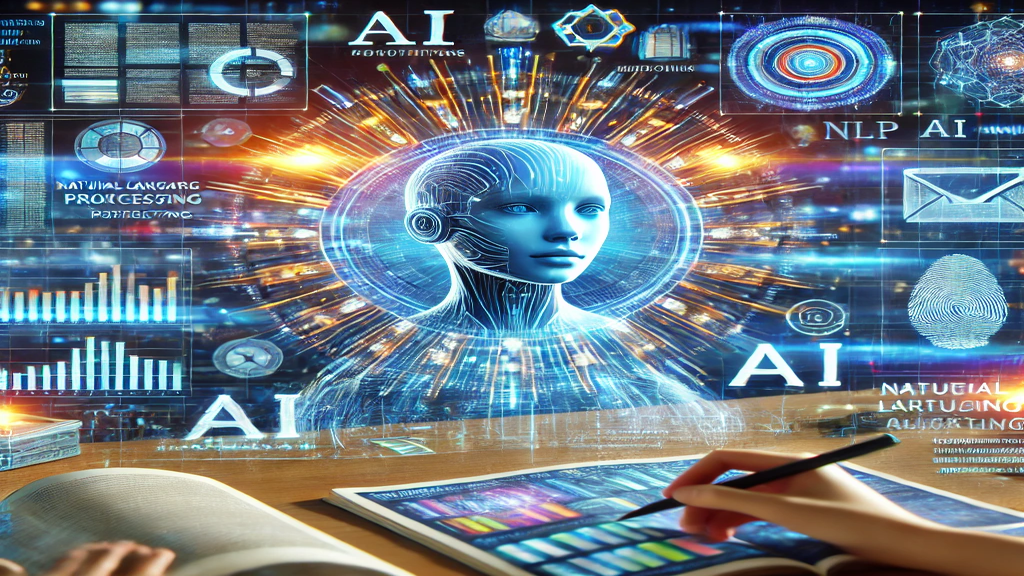

This article highlights the power and potential, application and innovations, practices and concerns about the usage of AI technologies in Media and Journalism.
Artificial intelligence (AI) has been transforming almost every industry, including the media and communication. As a game-changer technology, AI is swiftly penetrating nearly every area of our lives and offering businesses a higher level of productivity. The rising number of connected devices and the Internet of Things (IoT) are the main factors driving the growth of AI market which is projected to grow to $312.4B USD by 2027, according to ReportLinker.
The digital revolution of the 21st century led by AI has changed the means and ways we consume, produce, and distribute information. The value, power and impact of AI on media and communication industry is enormous and profound, ranging from personalized news delivery to enhanced content creation in music and TV entertainment, as well as in the advertising and marketing domains.

AI Empowers Personalized Content Creation
To cater the needs of diverse online audience, AI apps and agents are providing personalized content tailored according to each user’s unique preferences and interests. The Ai tools, based on machine learning algorithms, can identify and analyze vast amounts of user data and make predictions based on user behavior, demographics, and past interactions.
For instance, local and global news organizations are now using AI to curate personalized news feeds for their readers, based on their browsing and reading history. Social media platforms like Facebook, Twitter and YouTube are also using AI algorithms to personalize news feeds and advertisements based on users’ interests, search history, and interactions with the digital platform.

In the age of digital platforms, the AI tools enable users to access to personalized content. It helps users to find content that is more relevant to their choices, which in turn leads to a better user experience. In addition, Ai tools are not only helping the content producers, like BBC, CNN and Disney but also playing vital role in audience engagement which leads to higher engagement rates, click-through rates, and monetization of content.
Furthermore, Artificial intelligence in media industry is now increasingly being used as a tool to alleviate tedious tasks, and enable journalists and entertainment creators to work more efficiently. Media professionals, multinational mass media and entertainment conglomerate are using AI technology; to manage their films and budgets, to expedite repetitive tasks, streamline captioning, filter and distribute news, and much more.
For example, many media companies are now using Verbit’s automatic-speech-recognition (ASR) technology to caption their videos, including live broadcasts in real-time. Verbit’s in-house media transcription and captioning streamlines a once time-consuming process, allowing producers to save money and time on the laborious task of captioning and allowing for more time to be creative.
AI Optimizes Content Curation, Creative Solutions
The emergence of AI is also playing a significant role in content creation and curation. From news articles to video content, AI is being used to create, curate, and distribute content that resonates with the target audience.

One of the most popular use cases of AI in content creation is natural language processing (NLP). NLP is a branch of AI that focuses on the interaction between computers and humans in natural language. NLP algorithms are used to analyze, interpret, and generate human-like language. NLP is being used to create news articles, product descriptions, and even novels.
In news industry, Journalists can now use AI in media production processes. They can gather content and understand data pools, as well as compose and distribute media at the click of a button in what is becoming known as ‘automated journalism. Algorithms are being used to produce news stories at scale. Structured data on sports games and financial earnings, for example, can be transformed into news texts with little to no human intervention.
Intelligent notifications, also known as ‘recommender systems’, optimize the content readers’re exposed to, based on their individual preferences. Like most technologies, recommender systems are neither inherently good nor bad, but the subject has been cause for debate.
AI Transforms the Marketing and Advertising Industry
Besides content creation and curation, AI tools are facilitating marketers and advertisers to reach their target audiences. AI-powered tools can analyze user behavior, search history, and social media activity to deliver targeted advertisements to online users. The AI enabled strategies have led to more effective marketing campaigns and higher conversion rates.
For Instance, Google AdWords uses AI to target advertisements to users based on their search history and location. Similarly, Facebook Ads uses AI to analyze users’ interests and behaviors to deliver more relevant advertisements to them.
The power of AI technology is also being used to optimize advertising campaigns. Numerous AI-powered tools can analyze vast amounts of data and identify the most effective marketing channels, messaging, and content for the targeted audience.

AI, Fuels the Debate about Media Ethics and Risks
The key capabilities of AI in the optimization of content production processes, the improvement of the media’s economy, and the creation of new business models are huge.
The perils of AI are also global and widespread, thereby fueling the debate about vulnerabilities and several ethical concerns such as the rise of digital divides, invasion of the privacy, the potential for bias in AI algorithms, damage to pluralism and political polarization. Ai is also risking the media’s dependence on the large technological platforms.
For example, if an AI algorithm is trained on data that contains racial biases, it will also produce biased results. This could lead to discriminatory practices in the media industry, such as targeted advertisements based on race or gender.
Another significant concern is the potential for AI to be used for deepfake content, which involves creating fake audio, video, or images that appear to be real. Deepfake content has the potential to undermine the credibility of the media and erode public trust in journalism.
Conclusion
Finally, there is need to respond to these challenges, risks, and opportunities in the light of the growing implementation of AI in the field of media and communication.
AI is transforming the media and communication industry in many ways, from personalized content delivery to content creation, curation, and marketing. AI-powered tools have the potential to improve the user experience, increase engagement, and drive more effective marketing campaigns.
It’s critical for media industry businesses to keep up to date on the latest trends to determine where they can incorporate AItechnology to not only increase efficiency but keep up with the competition.
The author is a Assistant Professor at the Mass Communication, School of Social Sciences (S3H), National University of Sciences and Technology (NUST), Islamabad-Pakistan. He can be reached at dr.muhammadarif@s3h.nust.edu.pk.
Research Profile: https://bit.ly/4awLaKb

![]()




